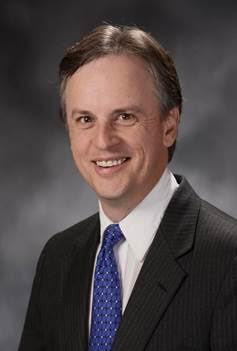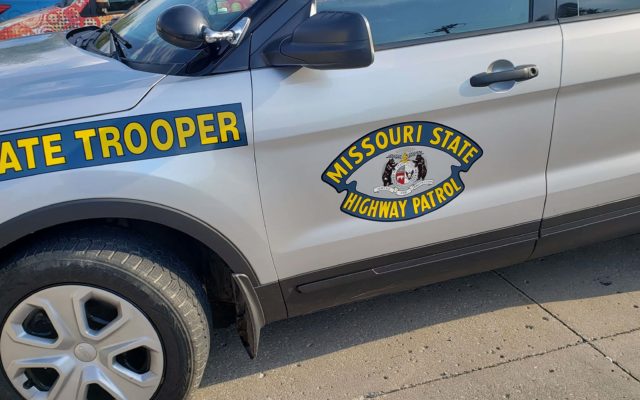THE EGGLESTON REPORT – MORE MAPS

Last week, I wrote about HB2117, the bill that redraws Missouri’s eight Congressional districts. That bill has now been passed by the Missouri House and moves to the Missouri Senate for consideration there. While some possible amendments were discussed in the House, ultimately the chamber passed the same bill that came out of committee.
There is also redistricting news of a different sort this week. This concerns the redrawing of the Missouri state House districts for the Missouri House of Representatives, the body in which I currently serve. Unlike the Congressional districts, the House districts were drawn by an independent commission whose work is now complete. The new House map is a bit different than the current one.
Currently, House District 1 (HD1) is all of Atchison, Nodaway, Holt, and Worth Counties. Under the new map, HD1 loses Worth and gains Gentry. This was required to give HD1 the population it needed to be a complete district. Currently, HD2, which is the district I serve, is all of Daviess, DeKalb, Gentry, and Harrison Counties. In the new map, Gentry is moving to HD1, DeKalb is moving to HD9, and Daviess and Harrison will be joined by Worth, Grundy, and Caldwell to make up the new HD2. Again, population is the reason the district is changing.
Currently, HD3 is Mercer, Putnam, Sullivan, and western Adair Counties. This district will stay almost the same in the new map. The only change is there is more of Adair in HD3 than before.
Currently, HD8 is all of Clinton and Caldwell Counties, with bits of Clay and Ray. The new HD8 is southern Clinton and northern Clay, which would include Plattsburg, Lathrop, and Smithville.
Currently, HD9 is Andrew and northeastern Buchanan Counties. The new HD9 will lose Buchanan and become Andrew, DeKalb, and northern Clinton. Currently, HD10 is the inner core of St. Joseph in Buchanan County, and that stays relatively the same in the new map. Currently, HD11 is largely southern Buchanan and northern Platte. The new HD11 gets some of the Buchanan area lost by HD9 and loses its Platte territory, and so becomes central Buchanan with parts of St. Joseph. Southern and eastern Buchanan will connect with rural Platte in the HD13.
The current House map can be found at www.tinyurl.com/2nj9edhr. The new House map can be found at www.tinyurl.com/mv98j8a9.
Until next time, health, happiness and prosperity to you and your family.
PICTURES FROM THE CAPITOL

Current Missouri House of Representatives district map

New Missouri House of Representatives district map
OTHER NEWS FROM THE CAPITOL
General Assembly Convenes for Annual State of the State Address
Members of the Missouri General Assembly gathered in the House Chamber Wednesday afternoon to listen to the annual State of the State Address delivered by Gov. Mike Parson. Parson used the address to deliver the message to the people of Missouri that the state “is strong today and will be even stronger tomorrow.”
Parson’s speech focused on budget priorities and American Rescue Plan Act spending goals for 2022 including workforce and education, infrastructure, agriculture, community development, health care, and public safety.
Parson said, “With a historic budget surplus and federal dollars coming to our state, we want to build on our past momentum to capture even greater opportunities for the future of Missourians. When other states will be filling spending gaps and budget shortfalls, we will be making investments in the future, because in Missouri, we took a common sense approach to the pandemic, never shutdown businesses, and have always had a conservative and balanced budget.”
- Workforce and Education
During his speech, Parson called for the Missouri Fast Track program to be permanently established, $31 million for colleges and universities through MoExcels, and $20 million for the state’s 57 area career centers. Parson proposed multiple investments in K-12 education, including fully funding the Foundation Formula and raising starting pay for Missouri teachers to $38,000 per year. Parson also recommended nearly $600 million in higher education investments that are expected to generate over $1.1 billion in economic impact for the state, strengthen communities’ assets, and bolster workforce development programs.
- Infrastructure
Parson called for major investments in infrastructure, including $75 million for the Transportation Cost-Share program established by his administration in 2019, $100 million for low-volume roads across the state, and $400 million for drinking water, wastewater, and stormwater systems. Additionally, Parson called for $400 million toward broadband expansion projects statewide, the single largest broadband investment in state history. This proposal would connect 75,000 households, expand access to rural areas and underserved urban areas, and update and expand wireless networks across the state.
- Agriculture
During his speech, Parson reminded the General Assembly of the continued need to support Missouri agriculture, the state’s number one economic driver. Parson called for $10 million to expand agriculture innovation and workforce programs.
- Community Development
Parson asked legislators to make meaningful long-term investments in local communities by allocating $250 million for a statewide revitalization program. With local matching, the competitive grant program will encourage strategic local investments to revitalize communities and spur local economic recovery and growth. To expand tourism, and drive small business growth and job creation, Parson proposed investing $69 million to begin construction of the Rock Island Trail, which will become the largest circular rail-to-trail network in the United States.
- Health Care
To strengthen health care networks across the state, Parson proposed $34 million to increase telehealth and telemedicine services in rural communities and the construction of a new multi-agency health lab to increase cross-collaboration for safer, healthier Missourians. Parson also called for doubling the capacity of Missouri’s six Autism Centers to help more families navigate the challenges of diagnosing and treating autism as well as reduce wait times for families needing services.
- Public Safety
During his speech, Parson expressed his continued support for Missouri’s law enforcement officers. Parson proposed investing $11 million to upgrade Peace Officer Standards and Training (POST) academies and provide more scholarships for law enforcement officers to receive POST certification and put more officers on the streets. These investments will aid with recruitment and retention efforts statewide and help keep communities safer. Additionally, Parson asked the General Assembly to invest nearly $140 million in certain community health centers across the state for vital capital improvements to help meet the increased demand for mental health and substance use disorder services.
- Legislative Priorities
Parson also called on the members of the House and Senate to establish a Cash Operating Expense Fund that sets aside 2.5 percent of general revenue to mitigate budget cuts and provide greater flexibility during emergencies.
“With a Cash Operating Expense Fund, we can achieve financial stability when the rainy days come,” said Parson. “This is the responsible thing to do, this is the conservative thing to do, and this is the right thing to do.”
Parson concluded his speech by saying, “When we look to the future and not dwell in the past, when we find solutions instead of problems, when we stand together instead of apart, we can accomplish anything. We must always keep pushing forward in this state, because no one is coming to do it for us. Missouri is strong today and will be even stronger tomorrow.”
Missouri House Approves Congressional Redistricting Bill (HB 2117)
The members of the Missouri House have approved and sent legislation to the Senate that will establish new boundaries for Missouri’s eight congressional districts. The House approved the congressional redistricting plan (HB 2117) Wednesday morning by a vote of 86-67.
The chair of the House Special Committee on Redistricting, who sponsored the bill, said the map approved by his committee and the House of Representatives was created with input from legislators representing their constituents, public testimony from citizens across the state of Missouri, and 2020 census data. He stressed that the map contains compact and contiguous districts as required by the constitution while also keeping communities of interest and like-mindedness together.
“We took the data from the Census and the input of Missourians from around the state to create a fair bill and a fair map. This is a map that keeps communities of interest intact, that abides by our constitution, and that provides a fair and accurate representation of voters in Missouri,” said the chair.
With the approval of the House, the bill now moves to the Senate for consideration. The sponsor reminded House members that the Senate will now go through the same process the House undertook, which could mean changes to the map.
“We had an honest and open debate amongst the members of the House. This vote today is simply a vote to say this is our product, we went through the process, and now it is your turn to take to the process and do what you want with the bill,” he said.
Show Me Strong Recovery Task Force Report Unveiled
This week lawmakers received the final report of a task force charged with making recommendations to support small businesses across the state. The report issued by the Show Me Strong Recovery Task Force provides potential solutions related to workforce, supply chain, access to resources, broadband, and support for minority- and women-owned businesses.
Formed by an executive order issued by Gov. Parson, the task force began its work last year to study and develop recommendations on ways to support Missouri small businesses, including those that are minority- and women-owned. The group conducted a seven-city listening tour and worked closely with the Federal Reserve Bank of St. Louis to analyze the impact of the COVID-19 pandemic on small businesses across Missouri.
The analysis confirmed that businesses in some industries, such as hospitality and retail, were particularly negatively affected, and businesses across all sectors are experiencing ongoing difficulties with hiring, supply chain issues, and workforce challenges. In response, the task force provided recommendations to help alleviate some of the issues that were identified.
Some of the group’s recommendations would:
- Improve childcare availability and affordability to aid working families,
- Expand and promote hospitality industry apprenticeships,
- Update and promote Missouri’s Fast Track program,
- Streamline small business interaction with state agencies by creating a “One-Stop Shop” business portal, and
- Promote and enhance existing state programs and services to support small, women-, and minority-owned businesses.
The full report is available online at https://ded2.mo.gov/show-me-strong-recovery-task-force.
Gov. Parson said, “As our state’s economy has recovered, it’s important to continue to support our small businesses, which are the backbone of our economy. We appreciate the work of the Show Me Strong Recovery Task Force members and the opportunities they identified to better address the challenges small businesses face. Their efforts have produced thoughtful recommendations designed to benefit hardworking business owners statewide.”


